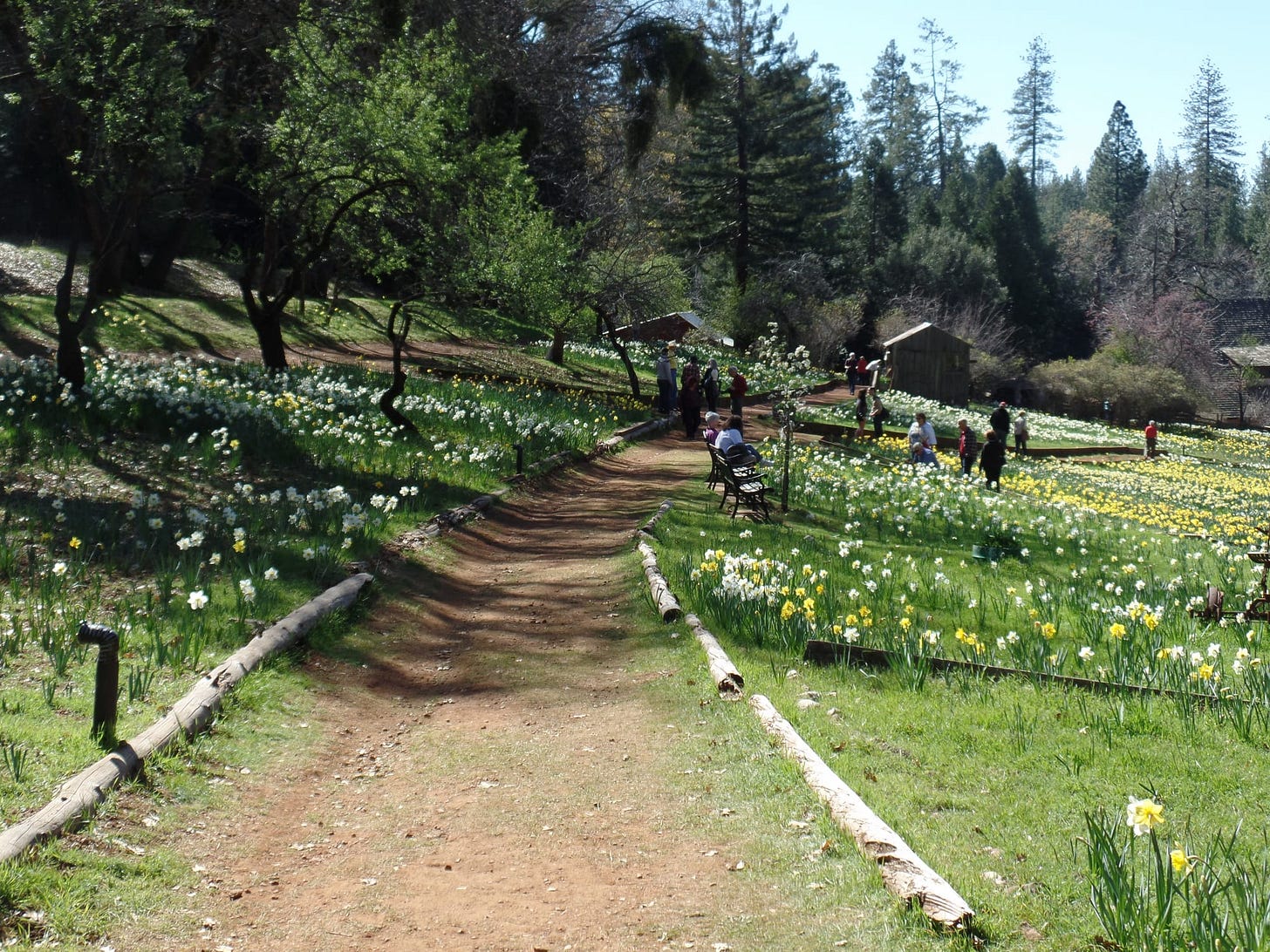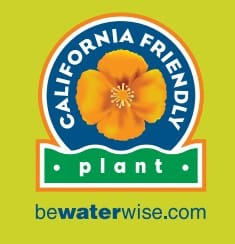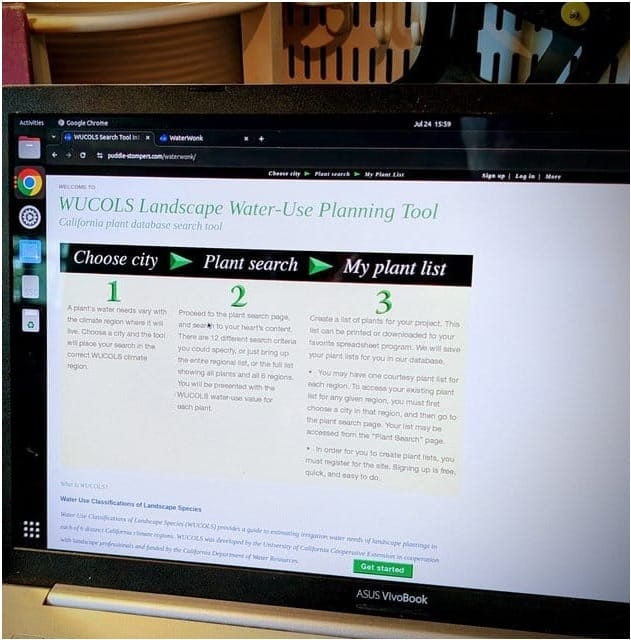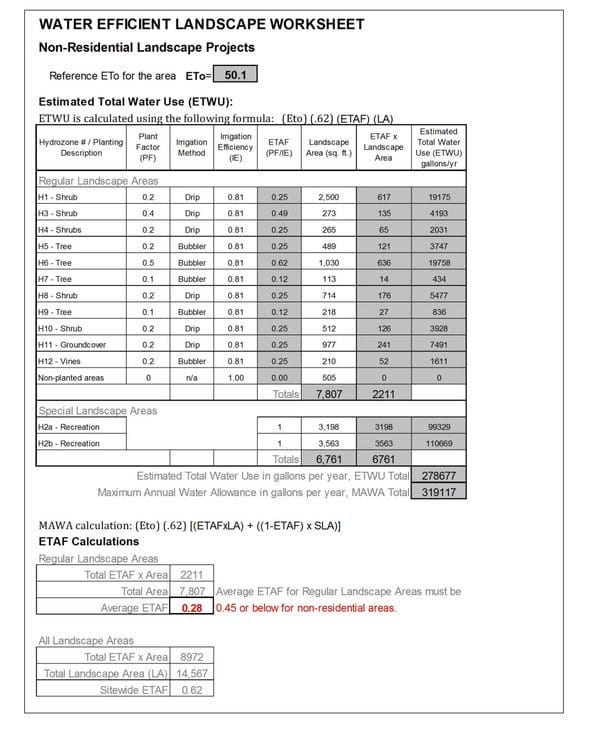A Guide to WUCOLS
California has unique flora that requires specialized care, distinct from the other 49 states in the USA. Due to the State's ongoing struggles with water resources, many homeowners have focused on using " California-friendly " plants.
California Friendly Plants
California-friendly plants require less water and are hardy to the Mediterranean and desert climates where most people live in the Golden State. These climates are not easily found in the other 49 states, or at least not in most populated areas. A plant designated as California-friendly is deemed to be suitable for the special climate of California's cities.
The California state government hopes that Californians plant more California-friendly plants. Planting more plants that are less thirsty and able to thrive on the West Coast will reduce water usage.
"Overall, landscape irrigation is estimated to account for about 50% of annual residential water consumption statewide." - University of California, Division of Agriculture and Natural Resources
How can I find California-Friendly Plants?
A guide has been created that can help garden designers, gardeners, and "show, mow, blow" maintenance workers. This guide is based on the "Water Use Classification of Landscape Species" (WUCOLS) database. This database is available for public use.
The WUCOLS database tells you specifically the water needs of a plant in any major city or region in California. For example, you can use the data to determine whether a daffodil is a low-water-use plant in Fresno or a very low-water-use plant in Palmdale.
🏴
The answer is no, it is the opposite. A daffodil requires less supplemental water to grow in Fresno than in Palmdale.
As you can see in the example above, a daffodil is a California Friendly Plant. It is not native to California. It is considered friendly to California's gardens because it will not be affected by limited watering.
Daffodils are the national plant of Wales, where they are native growers.

Welsh miners realized their hardiness in California during the Gold Rush. Many daffodils were planted in gold rush settlements to remind them of home.

Daffodils are not invading plant communities all over the Sierra Nevada mountains. This shows that not only are they agreeable to the California climate, they are not out-competing native plants. This makes it a true California-friendly Plant.
Who created this database?
WUCOLS is maintained by the California Center for Urban Horticulture (CCUH). CCUH is part of the University of California Davis Campus (UC Davis). CCUH received funding from the California Dept. of Water Resources (DWR) to create and maintain WUCOLS.
The WUCOLS database is required by law to be updated by the DWR. As per the FAQ on UC Davis' website:
"Assembly Bill #2371 was enacted by California legislature in August 2018 and requires DWR to consider a WUCOLS review every 3 years"
How can I access WUCOLS data?
There are 3 ways you can access the data:
You can download and save the entire database as a *.xlsx file, using Google Sheets or Excel. You can print it for use when away from your computer. Some people convert the file to a PDF format to pull it up on their phone or tablet.
If you are more technical, you can create a front end for accessing the data by taking the .xlsx file and converting it to .csv for use as a local database. A database-driven website builder like https://five.co/blog/how-to-build-a-database-website/ can be used to build this tool.
My preferred way of accessing the data is by using a website that was built to give public access to the data. Waterwonk is my preferred website as it is a clean and simple user interface. You can also use the UC Davis website if you don't mind getting overwhelmed with information. The UC Davis version can be installed as a web app on Chrome.
How does this help me plan irrigation?
The information provided by WUCOLS can be used to create water-efficient landscapes. If you are looking to create a drought-tolerant garden this is a good way to start planning your planting plan. Irrigation must be considered before you finalise your planting plan.
Hydrozones
You can use the WUCOLS data to create hydrozones for your plants. A hydrozone is a group of plants that all need the same amount of water to thrive. For example, Roses tend to be thirsty plants, but a Toyon is not, so these 2 plants would be placed in 2 different hydrozones.
When you group plants by hydrozones, this allows you to create multiple zones for irrigation. Each zone can be programmed in your irrigation timer to provide a different amount of water for each zone.
Model Water Efficient Landscape Ordinance (MWELO)
MWELO requires a water use classification for each plant added to certain types of landscape projects that require a permit. MWELO is regulated by the DWR in California. Accessory Dwelling Unit (ADU) Projects are commonly affected by MWELO requirements.
To get sign-off on your permit it is required that hydrozones are used in the design, and each plant in the hydrozone needs to be assigned a plant factor (PF). The plant factor is derived from the "Water Use" data found in WUCOLS.
The PF is a numerical value that is used to calculate water use for each plant. If the total water use value (ETAF) is above the specified limit (see example below), your permit will not be approved. An unapproved MWELO worksheet means that the landscape is not "California Friendly" and must be revised to gain approval.
YMMV
This is a simplified explanation of MWELO. If you have to pull a permit for an ADU, Your Mileage May Vary. In California, this calculation should only be done by a licensed architect or landscape architect. They are in a better position to explain the entire process for making MWELO calculations to pull a permit.
That said, I use MWELO calculations to create my irrigation schedules even if the project does not require a permit. I also follow this process for projects outside of California.
It is useful to understand this even if you are not interested in being a licensed landscape architect in California. The MWELO worksheets are simpler than they look. They do not require too much work to use as they can be downloaded and worked on in Excel or Google Sheets.
As you can see, WUCOLS is a useful tool even if you use it just for selecting plants while shopping at a nursery. Advanced gardeners can also use it to create water-efficient gardens that will survive any watering restrictions imposed by local water companies in California.







